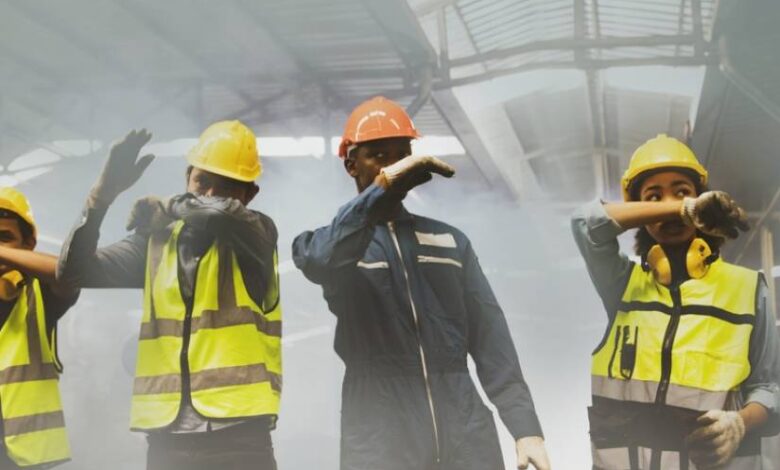
Fire hazards are a global scourge, indiscriminately wreaking havoc on homes, businesses, and other infrastructures. They can have devastating consequences, including life-threatening injuries, deaths, and severe economic ramifications for individuals and businesses. While smoke is often underestimated as a deadly hazard, it is a leading cause of fatalities in fire incidents as it asphyxiates victims long before flames reach them.
Smoke and fire hazards leave behind a trail of devastation in countless sectors, such as refineries, construction sites, manufacturing units, offices, and government facilities. These perils not only claim numerous lives and pose more profound and irreplaceable health risks but also inflict billions of dollars in annual damages in terms of damage repairs, legal liabilities, insurance coverage, and operational downtime.
The devastating implications of fire and smoke hazards drive businesses worldwide to adopt robust fire and smoke detection systems. Artificial intelligence (AI), specifically computer vision, is emerging as a game-changing solution that can provide real-time, efficient, and automated monitoring to ensure fire safety in the workplace.
Alarming statistics on the impact of fire and smoke incidents.
- According to the National Fire Protection Association (NFPA), there were an estimated 1.3 million fires in the United States in 2021. These fires caused an estimated $22.2 billion in property damage and 3,500 deaths.
- The main contributors to fire hazards at the workplace include electrical failure, improper equipment usage, smoking, flammable materials, hot objects, etc.
- Smoke inhalation was the leading cause of death in fires in 2021, accounting for 78% of fire-related deaths.
While smoke and fire hazards are economically dangerous, life-threatening, and have long-lasting effects — their impact can be substantially reduced if detected in early phases.
Detecting Smoke and Fire Hazards Early
Organizations need to adopt proactive hazard prevention tools to detect fire and smoke hazards in their early stages. One way to become proactive is to adopt workplace fire and smoke detection devices. By deploying these solutions at the workplace, organizations can identify hazard triggers (such as smoke or fire) or warnings (such as missing fire extinguishers) early and take prompt actions before those things turn fatal.
What’s the Role of AI in Smoke and Fire Detection?
Artificial Intelligence (AI) is a transforming technology that has completely revolutionized workplace safety. One such application of AI that is becoming increasingly popular in commercial, industrial, and public spaces is fire and smoke detection. AI-powered fire and smoke detection solutions use intelligent algorithms to analyze the visual and thermal data captured by sensors and cameras, quickly identifying and alerting fire and smoke-related risks.
Here are a few points highlighting the role of AI in fire and smoke detection:

- Early detection: AI-based fire and smoke detection systems can detect fire/smoke at early stages. These systems continuously monitor the surrounding environment with the help of sensors and ML-powered algorithms. With early detection, workplace managers can take prompt actions to reduce the spread of fire/smoke or plan for a safe evacuation.
- Intelligent Alerting: AI systems use machine learning algorithms to differentiate between actual and false alarms. By reducing the number of false alarms and providing precise information to responders, businesses can ensure a quicker response that saves lives and reduces property damage.
- Remote Monitoring: AI smoke and fire detection systems provide real-time access to alerts, notifications, and updates. This allows emergency services to be alerted immediately and people to be evacuated quickly, increasing the chances of a successful rescue operation.
- Warning Signs: AI-based smoke and fire detection systems look for changes in the color and motion of the video footage to ascertain if there is any hazard risk or not. The system triggers alerts upon identification so preventive actions can be taken quickly.
How do Computer Vision-Powered Solutions Detect Smoke and Fire?

Fire and smoke detection happens with the help of cameras powered by computer vision (Vision AI) solutions. Vision AI solutions analyze real-time footage of various cameras installed within the premises and identify hazard threats early. It does that with the help of trained models that have been trained with thousands of images in various lighting and environmental conditions and are capable of accurately identifying even the slightest fire post-training and testing.
The system identifies potential threats, such as smoke or flames, by comparing the live footage with the patterns and characteristics learned during training. Once a fire or smoke is detected, the system can trigger alarms and alerts — or activate fire suppression systems, providing early warning and aiding in effective firefighting measures.
The Science Behind Vision-AI Smoke and Fire Detection Models
Having learned how a Vision-AI-based fire and smoke detection solution works, it is essential to understand the science behind its detection process.
Visual smoke and fire detection models commonly use a technique that analyzes fire’s color and fluctuation characteristics. The algorithm first detects motion in a video by comparing frames. The algorithm then extracts fire-colored pixels from these regions. It does this by identifying pixels with a color characteristic of fire. For example, fire-colored pixels might be red, orange, or yellow.
Next, the algorithm applies wavelet transform to the extracted fire-colored pixels. This is done to identify the frequency components that are characteristic of fire. Lastly, the rate of fire increment in a region is calculated to determine whether the fire is controlled or hazardous. If the fire is detected as dangerous, the detector sends a signal to the control panel, triggering the alarm and alerting the building occupants.
Conclusion
Preventing smoke and fire hazards in the workplace is paramount to ensuring the safety of the workforce and mitigating property damages. Early detection of these hazards is key to preventing their spread, and Vision AI-powered detection systems are proving to be a valuable tool in this regard.
With their increasing adoption across industries, smoke and fire detection models quickly become a benchmark for safe workplaces. Despite their massive capabilities in automation, image processing, real-time monitoring, and predictive analytics, such models can have some challenges associated with their accuracy and scalability. However, adopting such solutions should be fine if the model is well-trained on a vast dataset under different lighting and environmental conditions.
Featured Image and Inner Image Credits: Provided by the Author; Thank you!
Source link



